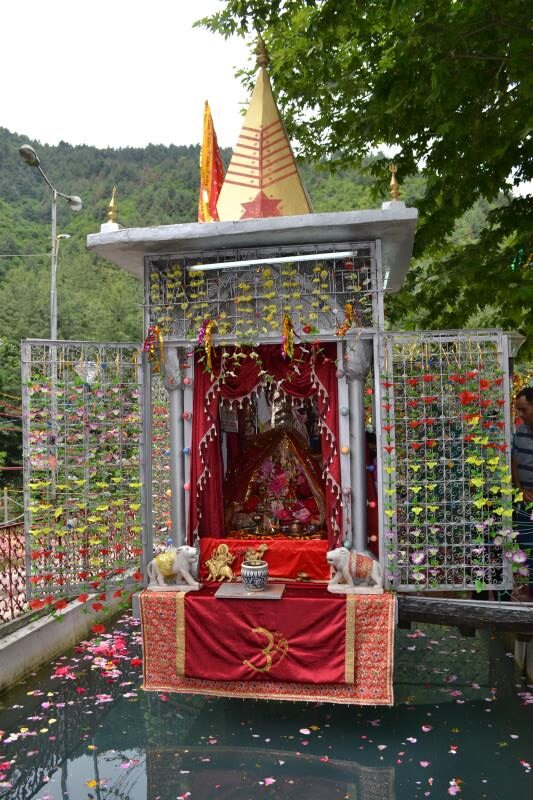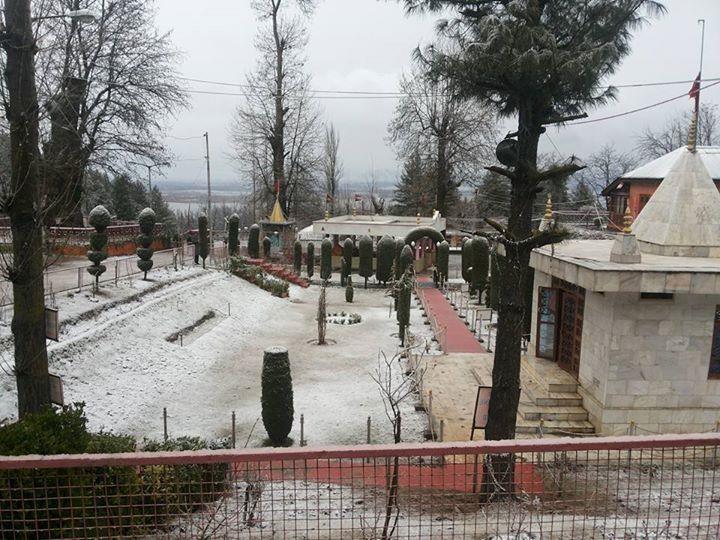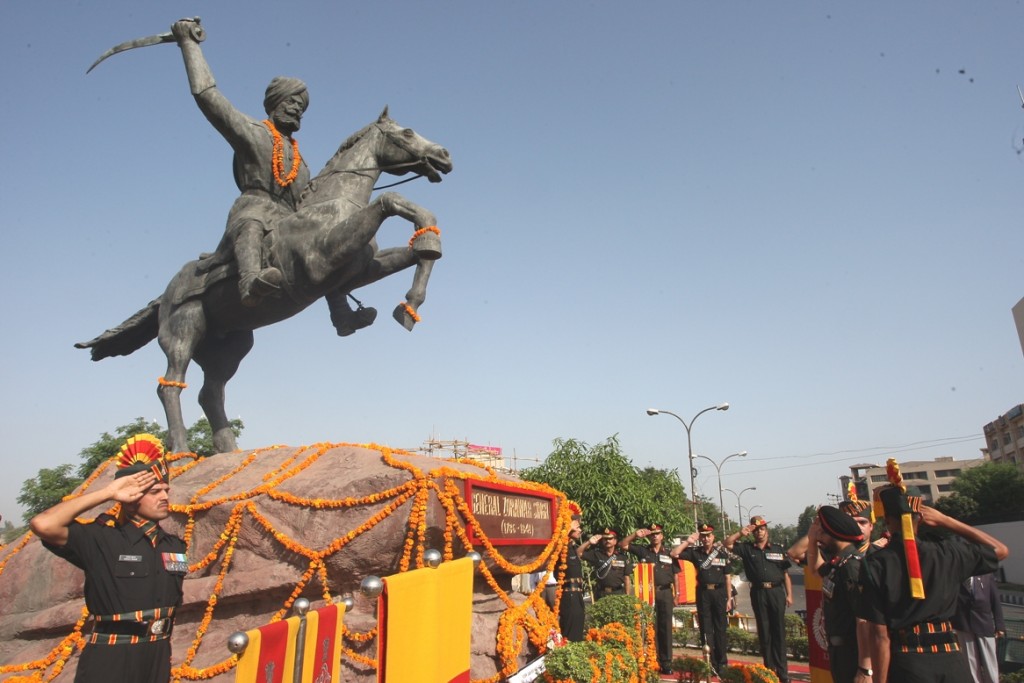Nestled in the heart of Srinagar, Jammu and Kashmir, the Zeashta Devi Shrine (also known as Zeathyar Temple) is a revered spiritual sanctuary. This ancient Hindu temple is dedicated to Zeashta Devi, a powerful form of Shakti worshipped since time immemorial by the Kashmiri Pandit community. Steeped in mythological significance and spiritual aura, the shrine is a beacon of divine blessings, symbolizing Siddhi (spiritual perfection), Riddhi (prosperity), and Buddhi (wisdom).
Mythological Origin of Zeashta Devi – The Story of Creation
The origin of Zeashta Devi traces back to the epic tale of the Samudra Manthan—the churning of the cosmic ocean (Kshirasagara). Both Devtas (gods) and Asuras (demons) desired the nectar of immortality, Amrit, hidden within the ocean. However, they needed the permission and guidance of Lord Shiva, the cosmic controller of Kshirasagara, to initiate the process.
Lord Shiva, pleased with their devotion, laid down specific conditions for sharing the divine treasures equally. Unaware of the challenges ahead, both sides agreed and began the mammoth task. Shiva instructed them to:
- Use Mandara Parvata (a celestial mountain) as the churning rod.
- Seek help from Lord Vishnu, who incarnated as Kurma (the divine tortoise) to support the mountain.
- Employ Vasuki Nag (the celestial serpent) as the churning rope.
As the ocean churned, fourteen divine treasures emerged, including Goddess Lakshmi. However, a lethal poison named Halahala (Kalakuta) also surfaced, threatening to destroy all creation. Unable to contain it, the gods pleaded again to Lord Shiva, who consumed the poison to protect the universe, earning him the name Neelkantha due to his blue-throated appearance.
Read also: Purmandal Shiv Temple: A Sacred Pilgrimage in Jammu
Emergence of Zeashta Devi from Divine Wrath
The story took another twist when the enraged Asuras captured Goddess Lakshmi and confined her within a hidden cave known as Guptagara (present-day Gupkar in Srinagar). To rescue her, Lord Shiva, in his wrath, created Zeashta Devi and Vira Vaitala, divine warriors who vanquished the Asuras and restored harmony.
Pleased with their success, Lord Shiva bestowed divine powers upon Zeashta Devi, making her a protector and uplifter of mankind. Her temple, located a short distance from the legendary Gupkar, became a spiritual destination for those seeking divine protection and enlightenment.
Spiritual Significance and Ritual Traditions
The Zeashta Devi Temple stands as a center of devotion and mystical energy. Devotees believe that worshipping here brings uninterrupted blessings, and it is customary to offer “Tehar” (yellow rice) every Thursday during the month of Zyeshta—a sacred tradition upheld by generations.

Accommodation and Facilities for Pilgrims at Zeashta Devi Shrine complex
To support the thousands of pilgrims visiting annually, the Zeashta Devi Shrine complex offers well-planned accommodation and religious facilities amidst the tranquil greenery of Chinar and Pine trees.
Accommodation Options
- Family Units: Fully furnished Yatri Niwas, suitable for families, equipped with private kitchens, bathrooms, cupboards, bedding, and hot water facilities.
- Dormitory Halls: Spacious dormitories accommodating up to 400 pilgrims, ideal during major yatras like Kheer Bhawani, Amarnath Ji, Gangabal, and Mata Badrakali Yatras.
- Meditation Huts: Specially designed prefab huts with private amenities, offering a serene space for saints and those on spiritual retreats.
Shrine Facilities for Devotees
The shrine caters to both spiritual and logistical needs:
- Religious Ceremonies: A well-equipped Hawan Shalla and Langar facility for rituals like Havans, Mundan, Yegneopavit, and Zarkasai.
- Essentials & Connectivity: Includes a 24/7 Pooja Samagri counter, in-house provisional store, LED TVs, CCTV surveillance, STD phone services, and Wi-Fi access on demand.
Annual Festivals and Celebrations
The Zeashta Devi Shrine is not just a religious site but also a vibrant cultural hub that hosts grand events attracting devotees from across India.
Major Events
- Annual Mahayagya: Held on Zyeshta Krishnapaksha Panchami, commemorating the divine birth of Zeashta Devi. Free food and stay for all pilgrims for three days.
- Zeth-Brasvar Thursdays: Observed for seven Thursdays during Zyeshta and Ashad months with traditional offerings like Taher, Kehwa, and Kulchas.
- Sri Shankara Jayanti Puja: A week-long event during Baisakh Shukla Panchami with Vedic rituals led by saints and Shankaracharya of Kanchi Kamakoti Peetham.
Other Celebrations
Devotees actively participate in festivals including:
- Navdurga (Chaitra & Ashad)
- Maha Shivaratri
- Diwali
- Dussehra
- Vinayak Chaturthi
Community Engagement and Welfare Initiatives
The Zeashta Devi Prabandhak Committee extends its services beyond religious activities. They offer financial assistance to the needy, patients, and destitute individuals annually. The bi-annual magazine, “Zeashta Sandesh,” celebrates the community’s literary and spiritual richness, publishing poems, bhajans, and cultural essays by renowned writers.
Best Time to Visit Zeashta Devi Shrine
The ideal period to visit the shrine is between April and June, when Kashmir’s weather is mild and pleasant. This season also marks several auspicious festivals and spiritual gatherings, making it the perfect time for both spiritual reflection and cultural immersion.
Read also : Must-Visit Lord Shiva Temples in Jammu & Kashmir
How to Reach Zeashta Devi Shrine
Travelers can easily access the shrine through multiple modes:
- By Air: Land at Srinagar International Airport (approx. 9 km away), followed by a taxi or local transport.
- By Rail: Nearest major railheads are Srinagar Railway Station and Jammu Tawi Railway Station, connected by scenic roadways to the temple.
Address:
Zeashta Devi Temple
Raj Bhawan Marg, Zeathyar, Srinagar, Kashmir
Post Box No. 1423, G.P.O. Srinagar
Official Website: https://www.zeashtadevi.in/
The Zeashta Devi Shrine is more than just a religious monument—it is a living embodiment of Kashmir’s spiritual energy, rich mythology, and cultural legacy. Surrounded by nature’s serenity and centuries-old traditions, it offers an unforgettable journey of inner peace, devotion, and divine awakening. Whether you’re a pilgrim or a spiritual seeker, a visit to this sacred temple is truly transformative.
















